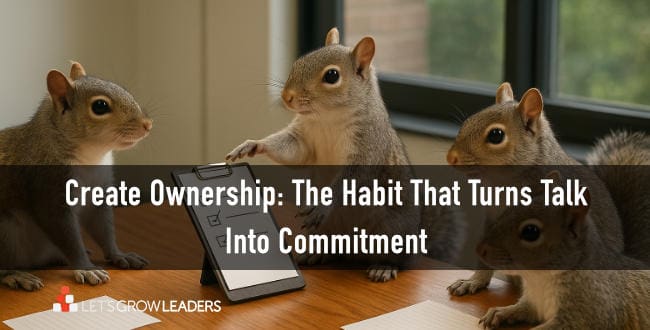How Sarcasm Destroys Psychological Safety and Trust
A keynote audience member asked us recently in an Asking For a Friend session, “Can you talk about the danger of sarcasm? Our VP uses it all the time. It ruins presentations, derails meetings, and shuts people down.”
We thought, “We know that guy.” We bet you do too.
Sure, quick wit or an ironic statement used well can energize the team and lighten the load. But a sarcastic remark meant to belittle those who don’t dare fight back diminishes confidence, degrades trust, and destroys psychological safety.
Why is sarcasm so rampant in the workplace? And, why would a manager demean someone they’re trying to “motivate?”
Why Sarcasm is So Dangerous
1. It creates shame in the target.
People will do almost anything to feel good about themselves. If you shame a person when you have positional power, you have put them in a difficult “fight or flight” position.
2. You get the opposite of what you want.
A very skilled self-aware person might come and talk to you about it, but otherwise, they’ll find another way to “get even”—perhaps they resort to similar sarcastic “humor” behind your back, undermine you, or reduce their work effort.
3. You give permission for everyone to do it.
Before long, your clever sarcastic comeback has turned into a caustic workplace where negativity reigns. (At the extreme, this can even cause human resource problems with hostile work environments.)
4. It doesn’t build anything.
You might make someone stop doing something by being sarcastic and shaming them, but you’ll never create a new positive behavior this way.
5. You limit creativity.
Consistent sarcasm creates an atmosphere where no one will try a new idea. The risk of failure and incurring shame is too great.
6. It drains energy.
We do our best work when we’re in “the zone”—feeling competent, challenged, and ready to do our best. Sarcasm and humor at another person’s expense create doubt and negative energy.
7. It destroys trust.
Your team needs to know you have their best interests at heart. Even if you do, sarcasm makes them wonder.
How to Be Effective and Funny
1. Start with results
When you’re tempted to use sarcasm, stop and ask yourself what you really want. What results do you look for? Encourage, inspire, teach, coach, show…these are always more effective than sarcasm.
2. Address issues directly
Never use humor to deal with behavior or performance problems. As we’ve seen, it creates more problems and does nothing to help the situation. Address these issues directly and professionally.
3. Use humor effectively
Any comedian can tell you that there is always one safe target to make fun of: you. Self-effacing humor displays humility and tells your people that you don’t feel you’re better than they are and that you don’t take yourself too seriously. It builds trust because people know you own your problems and understand your own shortcomings.
4. Deal with your Own junk
If you’re carrying around hurt or insecurity and regularly mask it with sarcasm or making fun of others, take some time to reflect on what’s going on there—maybe work with a coach. If it’s deep, talk with a counselor.
5. Clean-up
If you have potentially hurt others in the past, apologize, and make it right.
We love to laugh and we need far more of it—but if you’re a manager or seeking to influence others, avoid sarcasm or making fun of anyone (except yourself) and watch your credibility grow.
And Dear Leader…if work without human-centered practical leadership training is getting a bit too edgy for your liking – or your strategies just aren’t working like you need them to – visit our Live (online or hybrid) Leadership Training page to learn how to build and sustain company-wide change.
How Your Leadership Style Could Be Stifling Innovation and Problem Solving (Entrepreneur)








0 Comments